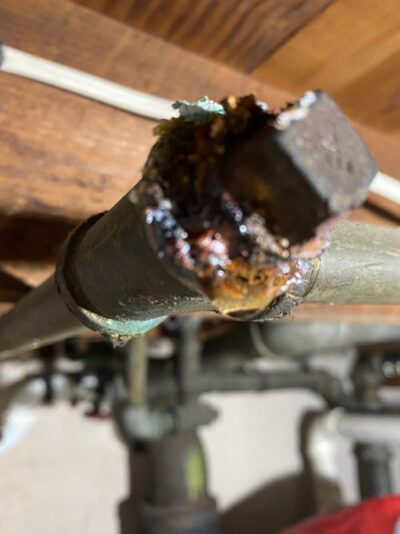Home Inspection – The Beginning
Home Inspection – The Beginning. Not many home inspections were active in the 1950s, Although many buyers did not know of such a service at the time many consumers were in the dark of what a house had in store for them. Most people were at the mercy of the builders or sellers of homes, not knowing the pit falls or any checks for inferior workmanship or materials used. Many areas of the country there were no Property inspectors at all. And many buyers had to sign a contract and hope that their dream home wasn’t a big sad money pit. Fights and law suits over inferior homes sold to families were many. At the end of the 1960s there were contractors who would do home inspections for consumers as a new service.
By the 1970s there were not many contractors doing this but there also was no organized effort to regulate the practice ether. Contractors statred a service called “Contractors Inspection” and it did help some. Although there were contractors who would inspect their own crappy work. This looked like a automatic rubber stamp of a house built. With no basic standard or municipal over see of the inspection quality by the builders or sellers.
Home Inspection – The Beginning – buyers wanted more information about the condition and workmanship of:
- Structure
- Roofs
- Plumbing
- Heating, air conditioning and ventilation
- Foundation
- Electrical
- Appliances
and more..
The Public Had Enough
In the 1970s a political effort to build a service model to form a helping guide to new home buyers. The idea was to form an industry to inspect homes for new buyers and have the inspectors certified. The certification would be by the state, city or county depending on the laws around the United States. By 1975 the state of California dove in to the task and developed the California Real Estate Inspection Association or CREIA.
The escalating demand was due to a growing desire by consumers to learn about the condition of a house prior to purchase. Meeting the expectations of consumers required a unique discipline. A distinct one from construction, engineering, architecture, or municipal building inspection. As such, home inspection requires its own set of professional guidelines and qualifications.
The American Society of Home Inspectors (ASHI) formed in 1976 and established the ASHI Standard of Practice for Home Inspections. This Code of Ethics is to help buyers and sellers make real estate transaction decisions based on accurate information.
At first look the roof is fine, but… give it a closer examination you’ll find a weather beaten open to rain, snow and even animals roof. With the shingles missing and even the tar paper peeling away.
Regulations Finally Happen
Many inspectors obtain a formal education, either online or in a actual college classroom. Most are both certified and licensed by a state regulatory agency or licensing board. Certified home inspectors are required in many states. Some are doing continuing education and even learn liability insurance. There are some states that don’t regulate inspectors at all.
The association membership acts as extra wall against chaos in unregulated states. To conform to decent ethics and understand industry-wide Standards of Practice.
The beginning of the new industry was sloppy with realtors not wanting the inspectors finding too many problems with the selling homes. Realtor agents at first felt threatened by the home inspection industry. Eventually they realized that it was a better certified evaluation of the home. Rather than the friends and family look overs and the unregulated contractors doing it.
Modern Home Inspections
Today, home inspection reports are detailed, professional documents that describe material defects and issues. The modern home inspector is school trained, and state certified with sometimes a construction background. These men and women have diplomas and certification documentation to prove they are trained to do the inspections. New technology and networking like asking help from other professionals to verify their concerns are the new way of doing the correct job. When the home inspection is finished you are printed out a detailed document of the homes issues, including photo proof.



